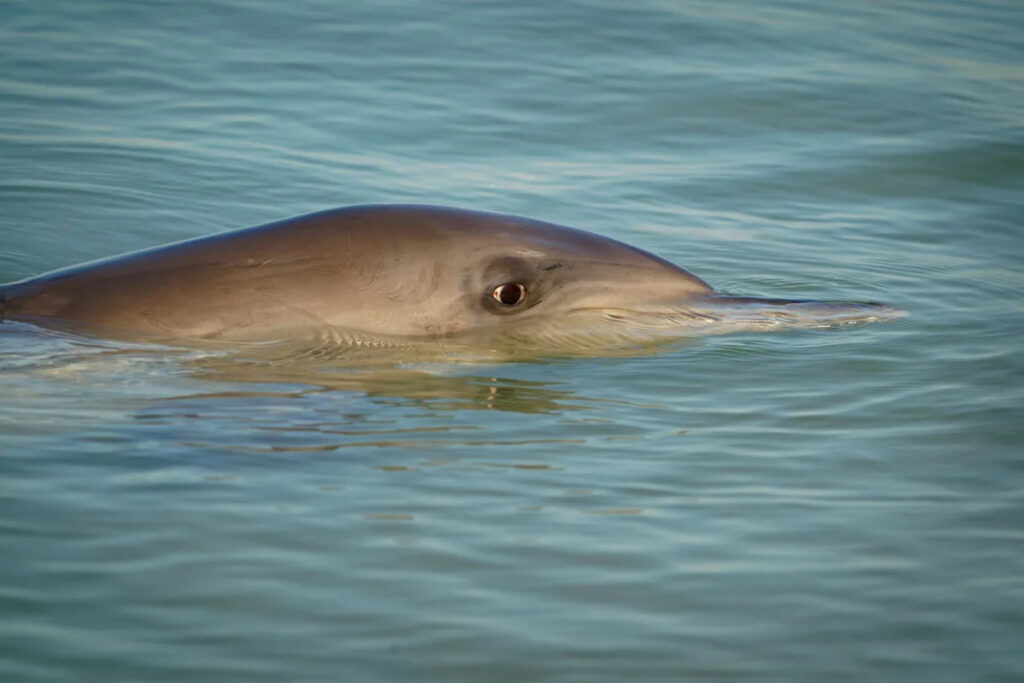Indus River dolphins are remarkable creatures that evolved to live in rivers after their primary habitat, the ancient Tethys Sea, went dry roughly 50 million years ago, according to the World Wildlife Fund.
Today, they are highly endangered and facing a new threat: microplastics.
A new study examined the gastrointestinal tracts of five deceased Indus River dolphins and found them to be heavily contaminated with plastic waste.
What’s happening?
Ever since the construction of an irrigation facility, Indus River dolphins have been confined to a 750-mile stretch extending from Pakistan into India, causing their population to decline dramatically, according to the WWF.
This waterway is considered one of the most polluted in the world.
By examining the gastrointestinal tracts of deceased Indus River dolphins, or IRDs, researchers hoped to gain a better understanding of the impact that microplastics are having on the environment and how they move up the food chain.
“Microplastics are transferred up the food chain, and IRDs, as apex predators, accumulate them along with additives including bisphenols and phthalates, which are proven to be endocrine-disrupting chemicals,” explained the study’s authors, according to Phys.org.
These substances “may cause digestive dysfunction, oxidative stress, immune disruption, and reproductive toxicity, collectively threatening the health, survival, and resilience of IRD populations,” the authors said.
The researchers found that many of the microplastic and nanoplastic particles in the dolphins’ guts were the same as those found in their prey, demonstrating how plastic contamination moves from one species to another.
The study revealed that 94.76% of the plastics found in the deceased dolphins were fibers, with more than half being PET.
“Polymers emanate from plastic ropes, fishing nets, plastic bottles and bags, and agricultural runoff, suggesting their accumulation by intensive anthropomorphic interventions,” the authors said, according to Phys.org.
In other words, the study removed any doubt that plastic waste from human activities was to blame.
Why is plastic pollution important?
Microplastic particles have now contaminated every corner of the globe and even our own bodies. While much remains to be learned about the precise ways in which microplastics impact living bodies and the environment, what experts do know has caused a high level of concern.
“There are so many unknowns, but we are seeing more data that suggest microplastics affect human biology,” said Bernardo Lemos of Harvard University’s T.H. Chan School of Public Health, according to the publication Harvard Medicine.
Microplastics have been observed disrupting living bodies at the cellular and even genetic levels, causing conditions that are well-recognized precursors to cancer, according to Harvard Medicine.
Microplastic pollution also has been found to contaminate food sources, soil, water supplies, and even the air we breathe, impacting the environment and, ultimately, human health.
What’s being done about it?
The only way to lower the amount of plastic pollution entering the environment and our bodies is to vastly reduce the production of new plastic. With only a small portion of used plastic being recycled, and many plastic materials being unrecyclable, the world cannot recycle its way out of the plastic problem.
The world produces over 500 million tons of plastic every single year, roughly 22 million tons of which end up in the world’s oceans, according to the International Union for Conservation of Nature and Natural Resources.
While cutting back on plastic production will require a massive undertaking involving international cooperation, there are still steps that we all can take at the individual level to help make a difference.
Cutting back on plastic use, choosing plastic-free alternatives for everyday products, and supporting brands that use plastic-free packaging can all help to reduce the amount of plastic waste that you generate while also sending an important message to companies that consumers prefer plastic-free alternatives.
Join our free newsletter for good news and useful tips, and don’t miss this cool list of easy ways to help yourself while helping the planet.

